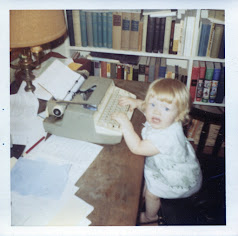 |
| Cheney Hall - Once a gathering place for Cheney workers and their families. |
I knew that Carl had been a velvet weaver and that one of his sons had been a silk dyer and I thought they worked for the same employer, but that was the extent of my knowledge. That day I discovered that the building that once housed the velvet mill was still standing and was now apartments. As I kept going I learned more about Manchester, the Cheney family who owned the silk and velvet mills, the ribbon factory, and so much more. I learned that almost their whole complex of mills, factories, storage facilities, halls, stables, etc. had been preserved, at least the exteriors, and now housed apartment complexes, businesses and museums. It was a very exciting find.
 |
| Cheney Brothers first substantial Silk Mill. |
 |
| Storage for one box car of raw silk. Constructed after an attempted heist in 1919. |
 |
| Locked storage units also constructed after the attempted heist. |
In May I visited Manchester for the first time since my childhood when the Town Hall hosted a Family History Day. We spent time viewing indexes of vital records, had a half hour with a genealogist who turned out to be a cousin, visited the cemetery, and drove around town a bit.
 |
| Emmanuel Lutheran Church,
the Anderson family church. Taken during our May visit. |
 |
| Once the site of Manchester High School, now a senior residence. Taken during our May visit. |
The tour we attended yesterday, co-sponsored by the Manchester Historical Society and Manchester Community College was lead by Dr. Chris Paulin of the college. He is a labor history researcher and has other qualifications but I cannot remember the name of the local institute of which he is Director. (He gave us his history at the beginning of the walk, and there was just too much information after that.) It is an annual event, sometimes drawing 100 people, though not this year, and this was the 39th year.
 |
| An entrance to the Velvet Mill building. |
 |
| Carl Johan Anderson standing at his looms, date unknown. |
The long and short of it is that they went back to work after a few weeks but they staged two additional walkouts before the matter was settled. Many of the weavers left Cheney Brothers; some voluntarily and some after being fired, others like Carl stayed on. The entire community took sides in this battle. Ultimately Cheney Brothers won. The weavers returned, working two looms at a time, and did in fact make more money. No unionization was attempted at the Cheney mills for 30 years.
 |
| More views of the Velvet Mill building. |
Towards the end of the walk, before we toured an area of homes built by the Cheneys and rented to their workers, Dr. Paulin pulled out his index cards and gave us some statistics on the length of time most workers stayed with Cheney Brothers. He also mentioned that these statistics came from payroll records. Now you know my ears stood at attention when I heard that. It turns out that all of these records are available to the public at the University of Connecticut's library. YES!! Add that to the to-do list right now!!
This also gave me the opportunity to show off the pins I had been wearing that day; my great-grandfather's 40- and 50-years of service pins. And the photo of him at this loom as well.
 |
| Click on the photo to see the detail. I was wearing these pins yesterday and carrying this photo. |






Wonderful post and photographs, Anna. Carl J. Anderson looks about 40ish in that photo - good-looking man. Your trip looks so wonderful, and how great you could share your history with the Cheney Brothers with the photo and pins. Treasures!
ReplyDeleteYour to-do list is likely growing in corners, as my grandmother used to say, getting longer without any work on your part!. Cheers.
Thank you, it was such a great time!
DeleteWow what a great event. I am glad to see photos of the mill and looms. I have recently noticed that some of my distant relatives were silk weavers, but I have never seen mills in the area where they lived. In fact, it always surprises me because the area is best known for their poultry industry. Your story gives me some idea of what millwork might have been like.
ReplyDelete